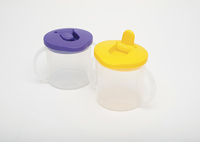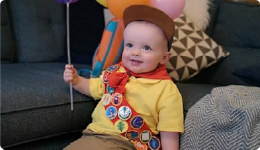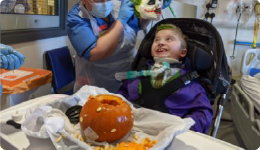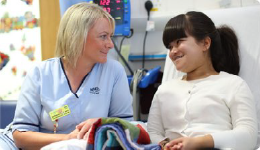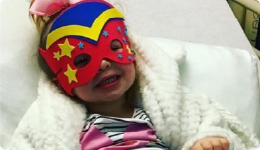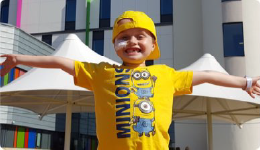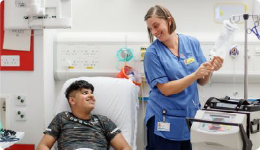Dressing
Your toddler can help with getting dressed by pushing their arm through their sleeve or offer a leg for trousers. Now is the time to start teaching them how to undress. They can take of their hat, socks and shoes (depending on the fastening) so you know they can pull things off. Now get them to help with the last step of taking their other clothes off.
Teaching the last step first is a teaching technique, called backward chaining, that can help children learn how to do complicated tasks. Backward chaining is when you break a task down into it's different steps and then teach the last step first. Once the child can do the last step you teach the second last step and so on until they can do every task. It works great for teaching dressing skills.
If we think about a taking off a t-shirt to start with you would follow these steps:
- you would help them get their arms out of the sleeves
- you pull the t-shirt up to their neck
- you pull the t-shirt over their head most of the way
- you get your child to pull it off.
You repeat this until your child pulls the t-shirt off their head every time. They might learn this quickly or it might take some time. Keep practicing every time you are changing your child. Then choose another garment and do the same. So for trousers, undo any fastenings and pull them down to your child's ankles and over their heels. Get your child to pull them off.
Eating and Drinking
Keep letting your toddler practice using a spoon. Use any opportunity to play with spoons too. Give your toddler a spoon while you are cooking. Involve them in simple food preparation, baking and cooking activities. Toddlers love to copy their care givers. There are ideas about Cooking at Home at different stages on the British Dietetic Associations website. Shopping is a great time to explore food too. Find out more from CBeebies Parenting Fun at the supermarket with baby.
Going to the toilet
Your toddler may be beginning to show signs that they need a pee, becoming restless or squirming. They may also let you know if they have a wet or dirty nappy. You can find lots of information about toilet/potty training on our toileting page. It is still quite early but there are some things you can start doing now (if you aren't already) to make the journey easier.
- Change their nappy in the bathroom.
- Look at books about going to the toilet together.
- Let them see you using the toilet.
- When possible put their poo into the toilet and flush the toilet together so they know what happens.
- Teach them about washing their hands after going to the toilet.
Teeth Brushing

Brushing your teeth is an essential part of looking after your body. You should be brushing your child's teeth at least twice a day. You can find out more from:



